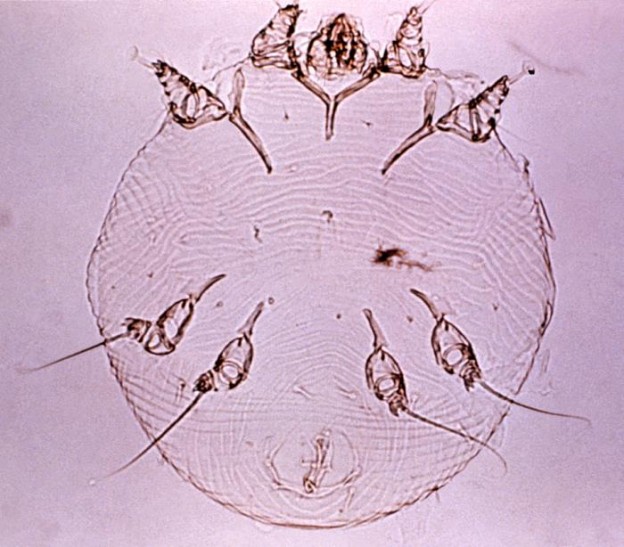Some 20+ employees at Winchester Hospital in Massachusetts have shown symptoms of possible scabies infestation after a recent admission of a patient who likely was infested, according to hospital officials.

In a letter to patients, Richard Weiner, MD, Vice President of Medical Affairs writes: On Wednesday, July 26, we discovered that a patient who was recently admitted to Winchester Hospital may have had an active scabies infection at the time of admission. The patient is currently receiving treatment. One additional patient on the same unit is suspected to have been affected and is also being treated.
At this time, more than 20 hospital employees have shown symptoms of a possible infection and are receiving treatment. Those employees will not return to work until they are no longer at risk of being contagious. The hospital has also initiated preventative treatment for non-affected employees who were potentially exposed to the infection but have not shown any symptoms.
Winchester Hospital has put in place aggressive protocols and procedures to treat impacted individuals, prevent spread of the infection, and safeguard the facility from any additional infection risk.
Scabies is caused by an infestation by the eight-legged “itch mite”, Sarcoptes scabiei. The mites burrow into the skin and lay eggs.
These burrows are tiny threadlike projections, ranging from 2 mm-15 mm long that appear as thin gray, brown, or red lines in affected areas. The burrows can be very difficult to see.
Transfer of this mite from person to person typically occurs through prolonged direct contact with infested skin. Transfer from undergarments and bedclothes occur only if these have been contaminated by an infested person immediately beforehand.
Outbreaks have happened in nursing homes and similar institutions, albeit rare.
It may take up to two months for symptoms to appear after initial infestation. Scabies produces skin rash composed of small red bumps and blisters and affects specific areas of the body.
Lesions are prominent around finger webs, wrist and elbows, armpits, belt line, thighs and genitalia of males and nipples, abdomen and buttocks are frequently affected in women. In infants; the head, neck palms and soles may be involved.
Itching is intense, especially at night and complications due to secondary bacterial infections with staph and strep are possible.
ReGrow Your Hair – New FDA Cleared | Clinically Proven HairMax – Models Starting at $199
The Centers for Disease Control and Prevention recommend the following to prevent and control scabies:
Scabies is prevented by avoiding direct skin-to-skin contact with an infested person or with items such as clothing or bedding used by an infested person. Scabies treatment usually is recommended for members of the same household, particularly for those who have had prolonged skin-to-skin contact. All household members and other potentially exposed persons should be treated at the same time as the infested person to prevent possible reexposure and reinfestation.
Bedding and clothing worn or used next to the skin anytime during the 3 days before treatment should be machine washed and dried using the hot water and hot dryer cycles or be dry-cleaned. Items that cannot be dry-cleaned or laundered can be disinfested by storing in a closed plastic bag for several days to a week. Scabies mites generally do not survive more than 2 to 3 days away from human skin. Children and adults usually can return to child care, school, or work the day after treatment.
Related:
- Kirk Cameron DOES NOT have leprosy
- Texas cyclospora cases double in two weeks
- Somalia: Cholera cases rise by 1000
- Hepatitis A: More deaths reported in San Diego
- Rabies: Minnesota horse tests positive
- Utah E. coli outbreak coming to an end, linked to infected livestock
- Vibrio vulnificus updates: Mobile County and Florida



http://outbreaknewstoday.com/possible-scabies-outbreak-massachusetts-hospital-49102/